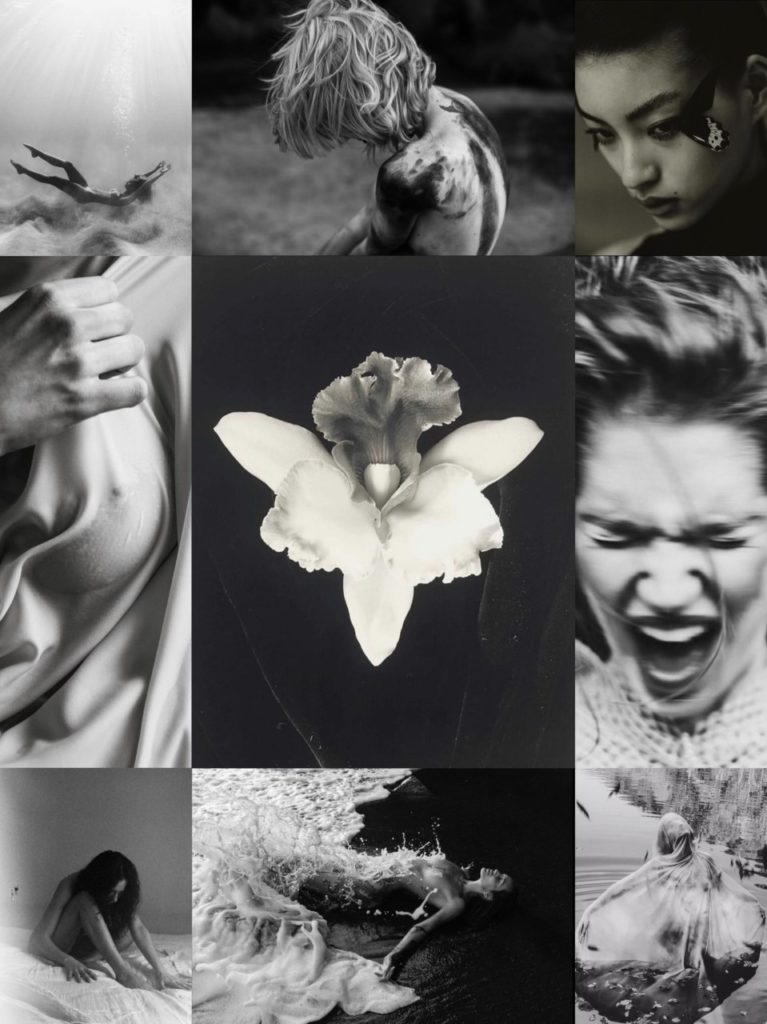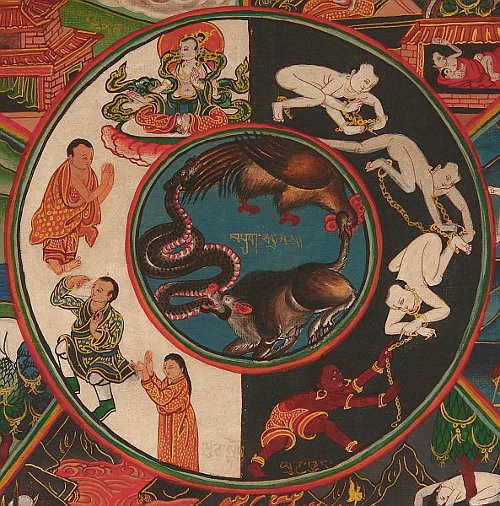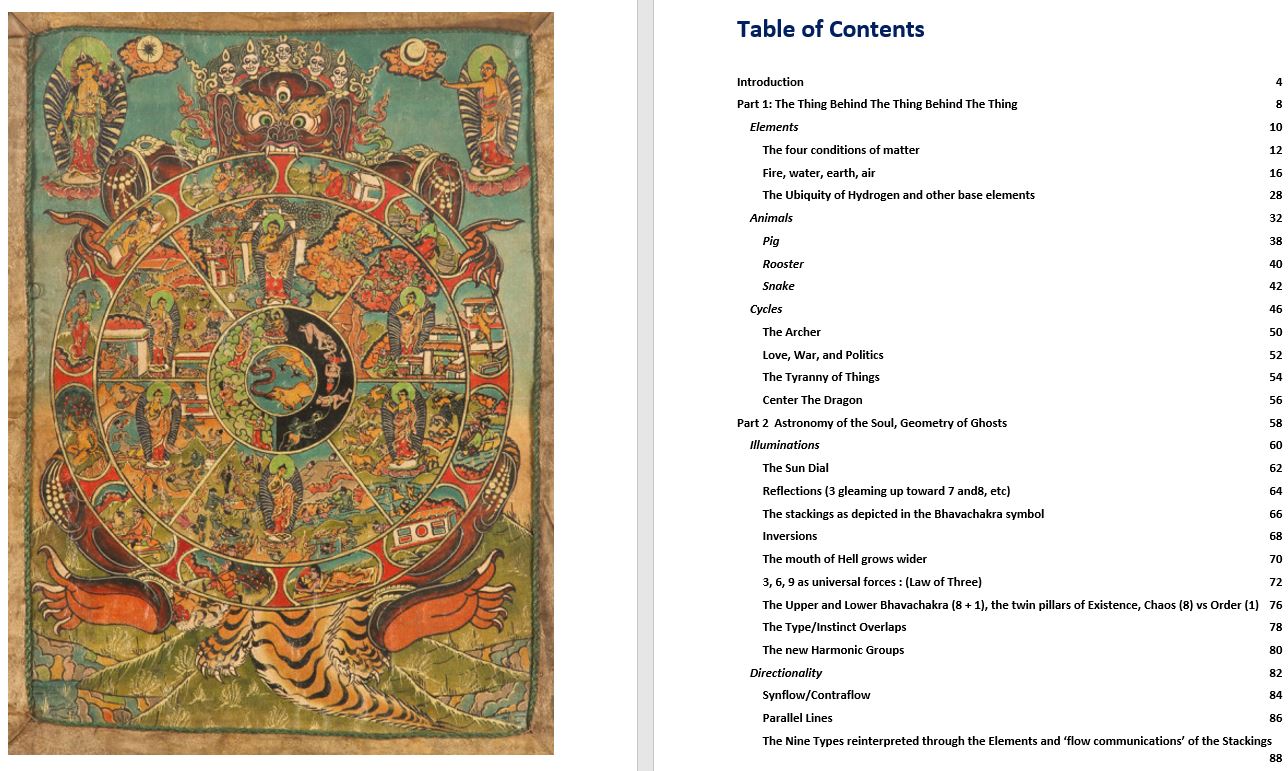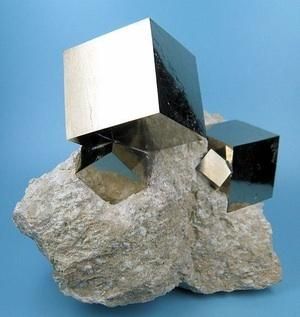EnneaSite by David Gray
Tag: instinctual stacking
The Dragon Of The Enneagram Emerges
The Universal Human Condition
For those following the Big Hormone Enneagram podcast series on the Bhavachakra, here’s another evolving model I’m developing.
*** This is intended as a universal model of the human condition/human mind, a way in which we all have a relationship with all six stackings (‘Realms’) at a meta-structural level.

instinctual stacking trails…
One way to look at the nature of each instinctual stacking is as a reaction, response, or compensation in relation to the next stacking in the flow.
In other words….
Contraflow:
SX/SO –> SO/SP. A reason for the swan/orchid-like elegance, as well as the distance or partial hiddenness, of SX/SO (which shows up, for example, in collages and other aesthetic output from SX/SO people) is that this stacking is ‘backed up’ or absorbing the influence of SO/SP’s Apollonian height and rarefied composition/perfection-of-form drive.
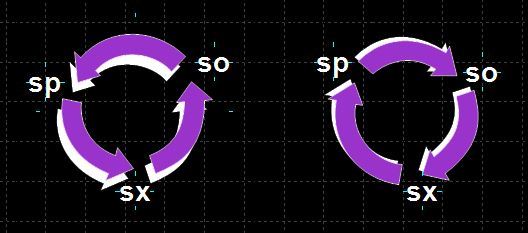
SO/SP has an urge toward immaculate order or dignified civilizational loft, excellence, and pedigreed firmness as a response to SP/SX’s teeming hellish undermining and subversive ‘festering breakdown/disease’ / ‘death & decay’ theme threatening to infect it. SO/SP –> SP/SX
SP/SX has a certain strange draw or cryptic pull to it because, in it, the attracting/burning glow of SX/SO sits behind a heavy/earthen (SP) veil or embankment which sometimes has you/the observer wanting to “see what’s in there / behind there.” Where there’s smoke, there’s fire. SP/SX –> SX/SO
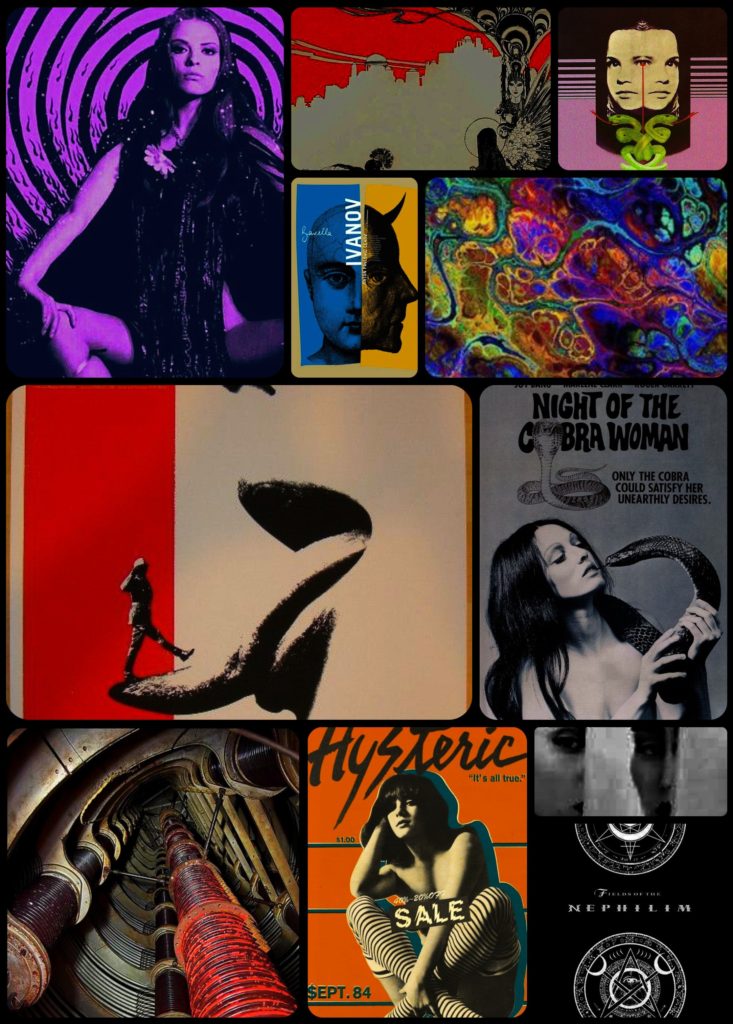
Synflow:
SP/SO is partly straightforward, plain, direct/cynical, with relatively few trills and embellishments, as a compensatory response to the scattered dazzling colors, fantastical style and drunken flair of SO/SX touching into it, threatening SP/SO’s straight lines and healthy/sober sustainability. SP/SO –> SO/SX
SO/SX often has a dispersed scattershot energy or polka-dotted self-multiplicity due to the transformative metamorphic destruction/disaster or ‘touch of death & rebirth’ of SX/SP in close proximity, breaking down forms underneath and ‘making many babies.’ SO/SX –> SX/SP
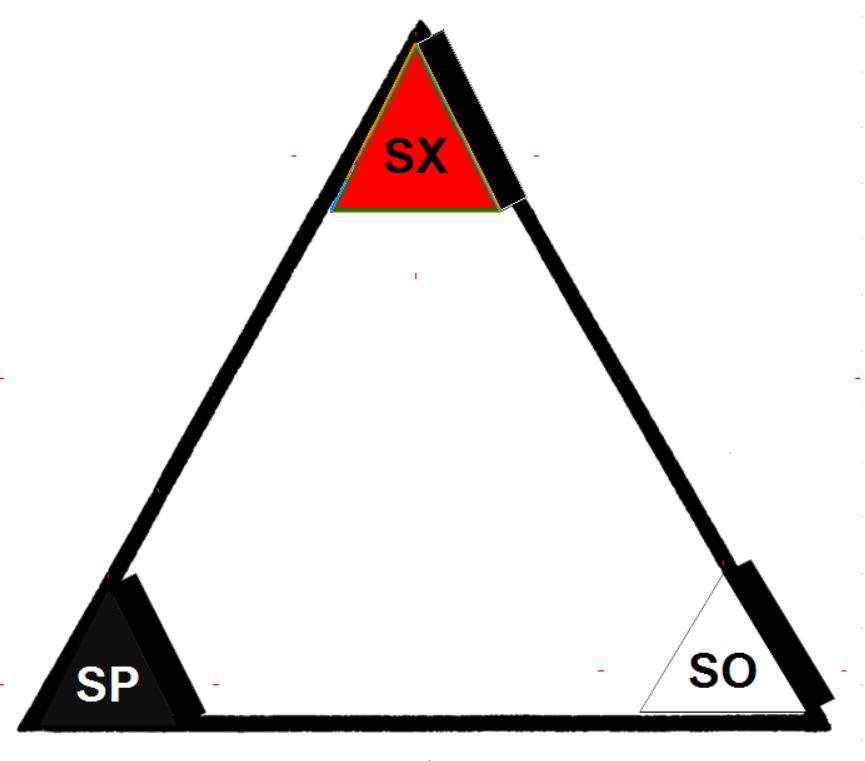
SX/SP often comes out ‘wet’ with transmogrifying or metamorphic ‘melting’ stylizations as a compensation for the nearby influence of SP/SO’s dry/solid foundations and straightforward forms and appearances. SX attraction, here, requiring an extra dose of a sinuous or undulating quality, to such a degree as to flirt stylistically with themes of self-destruction or self-reformation. SX/SP –> SP/SO
These are only a first set of iterations around this idea. Plenty more that can come of this approach….
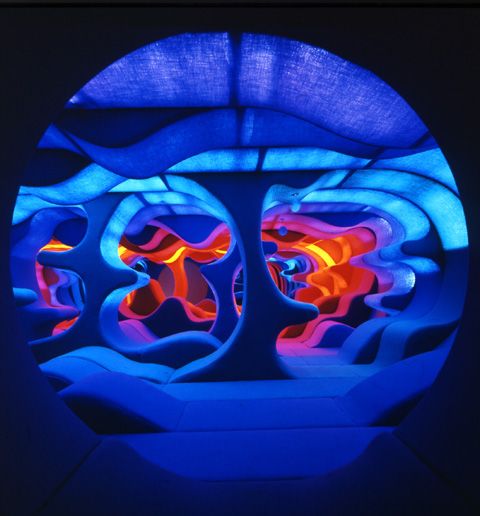
Instincts: Wild vs. Domestic
Rough draft/excerpt from the book I’m working on.
Looking again at the instincts (and the Four Elements I associate with them) at an archetypal level.
SP = Earth
SO = Air
SX = Fire & Water

—
One angle on the three instincts is a conceptual division between SX versus SP and SO. The latter two organically combine at an elemental level to often generate stability, structure, sustenance for oneself and the collective – the figurative machinery of day-to-day life and culture, among other things.
Sunlight, air, wind (SO elements) applied to SP Earth renders dry firm frameworks, firm systems, routines, work habits, rituals. A sober grid placed across Time/Space, a calendar of pragmatism, shared reverence and celebrations honoring higher principles of invisible ‘sky laws’ that inspire human excellence and basic human decency.
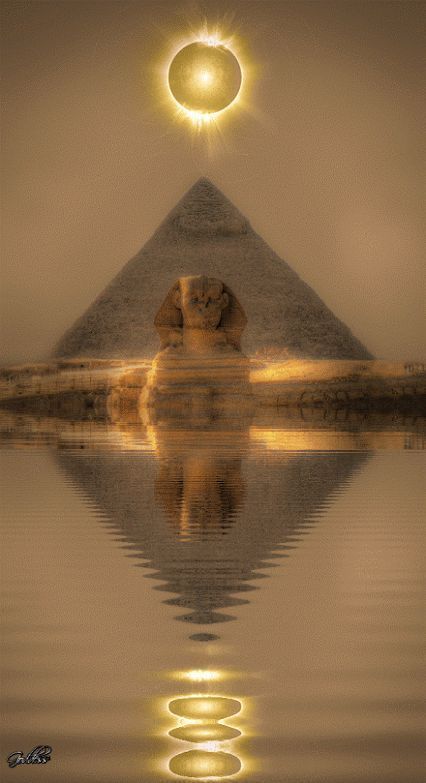
Air and sunlight also kill bacteria. Hence, in the blend of SP and SO, the framing and mechanisms (literal and abstract) that make up and support the functional routines of life and cooperative human interaction which these two instincts build and create remain significantly dry and neutralized – largely devoid of SX’s Water and the temperature extremes and variance of SX Fire – thereby fostering collective sustenance and growth of various kinds (commercial growth, civilizational expansion, etc).
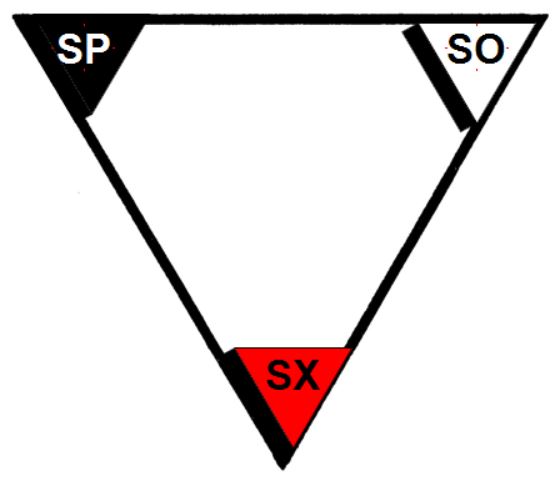
An underlying reason why we get sick with the common cold or flu (or worse) is the eruption of SX’s shadow in the form of personal inflammation (SX ‘flames’) originating in the messy, sticky wetness of SX Water in our bodies. Illness forces a break in the workaday world that SO and SP are attempting to hold in a state of healthy sterility and bright Apollonian light.
In so-called ‘less civilized’ cultures, the daily stuff of life is, let’s say, still somewhat necessarily governed by SP and SO. Mental attention into sexual attraction and attractiveness – the transfixing and self-involved mating dance that is SX – isn’t particularly sustainable or conducive to group cohesion or the pragmatic coordination of people and resources.

Some such cultures have SX built into their calendar and mythology. The shaman, for example, is clearly an embodiment of SX energy, with his inherent androgyny, use of ecstatic music, fortunetelling, spells, ‘fiery water’ potions and hallucinogens, mercurial magic and Trickster-ism, engaging in blood/fire rituals of destruction, chaos, and rebirth, pushing souls over the edge of the boundary line between the daily world and the spiritual realm.
Overall, a sizable factor in the health of a society is determined or can be gauged by its underlying relationship and degree of integration of SX into the culture. In the modern world, the role of shaman is often partly embodied in (or projected onto) musicians, rockstars, actors, painters, filmmakers. The degree to which this idol worship is a genuine replacement for established rituals that more directly revere and incorporate SX into the culture is a long topic and subject to debate. Quickly glancing at the state of the World, however, the current status quo appears imbalanced or distorted, bordering on dysfunctionality and societal breakdown.

This steers into another large topic – the religious urge that most people seem to have in varying degrees – also brings up the subject of religion as an underlying mytho-spiritual backdrop for cohesion of civilizations and groups of various sizes. Our current-day celebrities are our ‘stars’ – diamond-set in the dark velvet high of night where we admire their shine and magical winking. Our innate religiosity unconsciously holds pop stars in much the same abstract realm as planets and astro-constellations named after mythological deities – the same sky theater that we imagine governing our fate, as gods do.
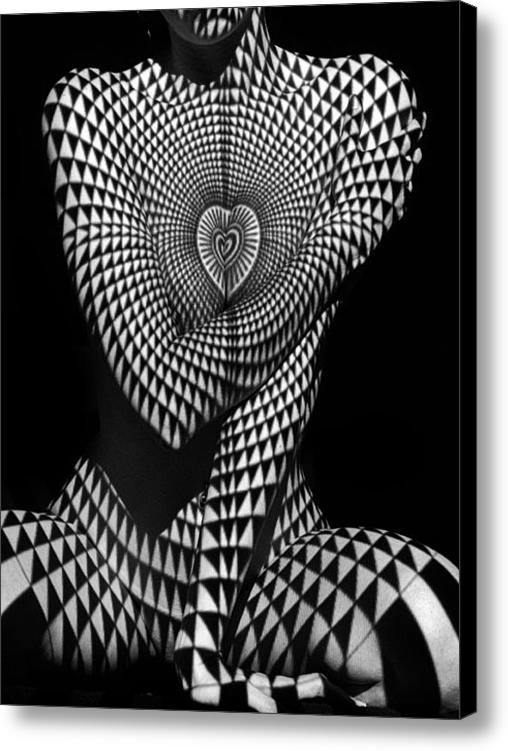
The varying amounts of demonization-of-SX that arise in societies, religio-philosophies, and civilizations predominated by SO and SP, from one perspective, are a correct response to the destabilizing energy of SX.
Fires have to be watched closely, as they always hold the threat of going quickly out of control and becoming a major force of destruction. While the watery dissolution and liquidy loss-of-self symbolized in archetypal SX seek out the very lowest places, seep under the interactive frameworks that bond cities and systems of commerce and government, rusting the psychic iron grid, potentially toppling great structures by dissolving their stance and making them loose down below.
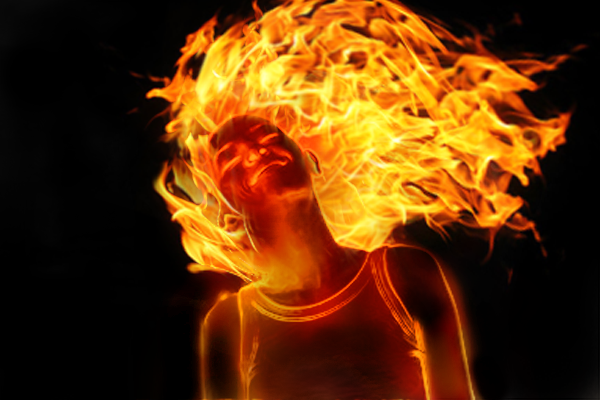
The Sun Dial enneagram
If you’re a listener of the Big Hormone Enneagram podcast, you may have heard me mention a Sun Dial schema that I apply to the Enneagram symbol. Per the (rough draft) graphic shown here, it’s fairly straightforward: Point 3 represents the East, 6 is the West, and 9 is midday sky.
The Sun is, then, traveling counterclockwise on the ennea-symbol, from 3 upward to 9 and down to 6, where it then ‘submerges into night’ at enneagrammic points 5 and 4.
The line that connects 3 and 6 therefore represents the horizon line of the planet. 5 and 4 are thus Underworld dwellers or hellions or just profoundly misunderstood.

As might be apparent already, this modality applied to the symbol generates numerous insightful metaphors …some of which I’ve identified; some of which are yet crouched down in the skinny…or waiting in these long lines, number in hand, hoping for their turn.
As you may have heard, the Sun rises in the East — at Point 3. And from our imaginative earthly perspective, it’s thrusting upward, surging higher, rising athletically to the top, motivated to hit its peak number… the way people who are 3s can be. This gets at another quality in Type 3 …of embodying a role as universal flag-bearer of Hope, through their active example infusing us with the feeling of ‘the dawn of a new day,’ filled with fresh possibilities and potential achievements.
3 is also the archetype for Personality in general. And so, we ‘put on the face’ of our personality each morning, after emerging from the darkened limbo of the dream world. It’s interesting to watch yourself become your personality as you wake up. There’s a brief phase, there, where it could go differently. But…. we put the whole thing back together each morning, put on that old uniform, go to work – sometimes just the deadly serious work of being our personality.

The Sun travels up to the neutral of Point 9 – here it’s not East, not West. Takes no sides in the daily debate, even as it cheekily splits the day in half. And then, defying the workday itself, Point 9 imposes a kingly relaxation – a lunch break, right in the middle of productivity.
Sun continues around to Point 6, where it takes us all into the uncertainty and insecurity of unseeing / unknowing: darkness is creeping and night is close, we’re about to lose our sense of direction and the orienting beacon of the Sun. Maybe the nightly stars will form up into zodiac gods to guide our fate and see us through this unnamable darkness.
So, looking at the line between 3 and 6, many or most of us generally have this idea of being ‘workers’…working from sun up to sundown. People identify with what they ‘do for a living’ (do = 3, living = 6). For good or bad, we associate ourselves with how our vocation contributes to the greater society or nearby community, or with our work’s ability to sustain and support us and those near and dear to us. This is the universal line between 3 and 6.
Besides the patternistic rut we’re unintentionally digging in the horizontal road to work each day, we’re trudging a deep groove of Personality in the earthly horizon along this 3-6 line. This is a very flat existence. It’s why, however, when the camera zooms way up and out to show the big blue-green spinning planet, there’s a flutter of inspiration in our bellies at the pregnant idea of a rounder, more all-inclusive perspective for ourselves, personally, and everyone…and how wide this new holistic vision might split us open at the ‘seems,’ if we can get our harried head around it.
Become a Patron!
book support
I’m focusing on my Enneagram book, and would appreciate your support and input.
I’m utilizing several new conceptual approaches to the Enneagram Types and Instincts. Having studied and worked with the Enneagram for 30 years, as well as authoring the Enneagram website EnneaSite.com, over the last few years my thinking has landed in a vivid symbolic overlap between the Instincts (or Instinctual Variants) and a central ancient Buddhist symbol known as the Bhavachakra (or Wheel of Life).
Become a Patron!
At the center of this Wheel is a pig, a snake, and a rooster, chasing each other in a circle and biting each other’s tails. Traditionally, as a set of base archetypes that represent core aspects of our overall human psychological dilemma, these animals allude to ignorance/delusion (pig), aversion/hatred (snake), lust/desire/grasping (rooster). My proposition, however, is that there’s a second layer, hidden thus far — an intuitive relationship between the characteristics of these three creatures and the typological qualities of the Instincts (Self-Preservation, Sexual, Social).
Tying in the Buddhist philosophical worldview illuminated by this Symbol and the insights into the Three Instincts that these allegorical animals represent, the suggestion here is that, at the axle of this Great Wheel, in symbolic space, we’re essentially glimpsing into the psychic source matter that forms the rut that is our personal psychology. The snake, pig, and rooster represent the primordial raw materials as well as the electricity that animates the skeletal framework of our typology and personal psychology.
Another major component in the approach I’m taking is the use of metaphorical correlations between the three instincts and the Classical Four Elements (water, earth, air, fire).
The interest of this book is predominantly not in philosophy or the sciences, or even spirituality in any direct way, but in the archetypal forces and symbols that underlie the nine personality types and the three instincts, which are more deeply understood and accurately conceptualized through such things as the classical Elements.
Besides their traditional utility in various esoteric and scientific subjects, the Elements can be seen as animating forces that light up the human psyche – or as a bridge between the science of our biology and the abstract architecture of the psyche and personality.
Fire in the body rises in the psychological state of ‘the heat of passion,’ ‘flames of burning desire,’ etc. The existence of these figurative phrases is urging us to look at the Elements in a psychological context.
The Four Elements have been studied, symbolically utilized, considered in multiple classical contexts, including the philosophies, sciences, and esoterica of ancient Greece, Persia, Egypt, Babylon, Renaissance Europe, among others. But turning to our day-to-day connection with these energies: We speak of someone being warmhearted/coldhearted/incendiary (temperature/Fire), or entrenched/stuck/dogmatic (solidity/Earth), mercurial/flighty/footloose (mobility/Air), inconsistent/draining/juicy (fluidity/Water), etc.
I appreciate your participation in my writing process, and am looking forward to sharing previews and excerpts of the book, which are available now if you’re interested.
Many thanks,
David
Become a Patron!

